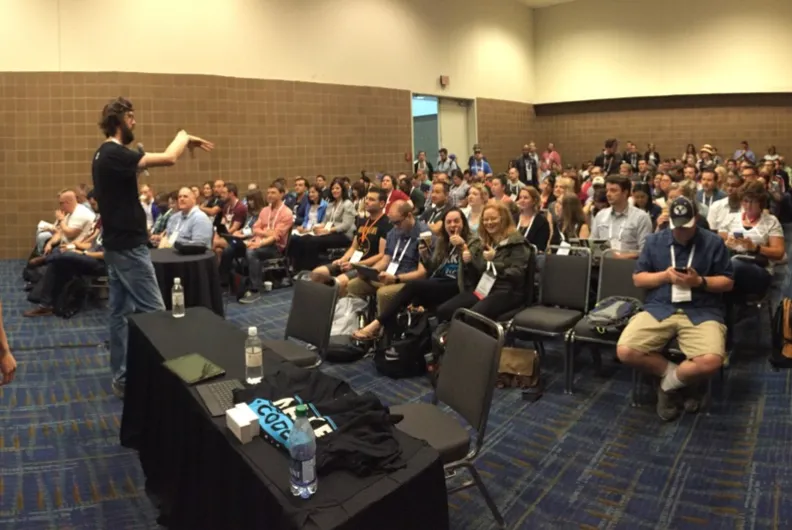Content-Driven UX
This is the third in a series of posts recapping ImageX’s presentations at this year’s DrupalCon. A content-driven framework is essential for any successful user experience. Content strategy and UX can no longer be considered separately, and to ensure that they work together to make your website its most effective, the following components must be considered: your audience, their interactions, SEO, content distribution, and finally, measurement.
June Parent, Senior Digital Strategist (left), Bjorn Thomson, Senior UX Architect (right) presenting at DrupalCon New Orleans 2016.
Content Strategy and User-Centered Design
Content-driven UX is the confluence of two paramount disciplines: Content Strategy and User-Centered Design. A content-driven UX approach places content at the center, side-by-side with users. A website at it’s most basic, is just, well, content that users interact with. Websites are living representations of brands, storefronts, and communities. They motivate, influence, and compel us into action. Websites are powerful and their requirements are becoming more and more complex. Meeting those requirements demands stronger research and increased synergy across adjacent disciplines like content and UX design. When you merge the two, something wonderful and powerful happens -- you’re able to enhance web experiences by leaps and bounds. As practitioners, we have to be mindful of the businesses we serve on a deeper level – what are its ‘mission-critical’ goals, how will growth be achieved then nurtured, what’s the process to govern lead-generation content, etc. Part of our job may include scoping lead-generation strategies or increasing qualified traffic -- all housed in a beautiful, bold, and modern design. So, let’s stop and think about how we might create a growth-positive experience that motivates, influences, and/or invokes action.
Of All Topics, Why Content-Driven UX?
I was one of those designers who was put off by code. I was passionate about design and content, but not necessarily the execution of front-end development. I saw the evolution of requirements in the business and understood that it’s important to deliver the best services possible. A content-driven UX approach put her at the front-end of projects where strategies around experience are shaped and formed. When you piece the information together a lot of exciting things start to happen. A story begins to unfold, creative ideas spring up, and conversations about digital strategy happen with more granularity. There’s also a growing momentum, industry-wide, for the role because helps to meet complex marketing requirements head-on and allows creative teams to streamline workflows.
These days the web is bigger and entirely more complex. For some, success hinges on delivering experiences that have the ability to eclipse competitors. For others, it could be about visibility or community. No matter what the site is for, every piece of content matters. Every page and section must serve a purpose. Every interaction is consequential. When users enjoy and trust rock-solid content, they’ll return time and time again. It’s called ‘content-loyalty’ and it’s a wonderful gift from users. When you add in strategies to identify, nurture and roll ‘qualified leads’ into bonafide ‘brand-advocates’, you've got pathways towards ‘brand-loyalty’. Now, wrap a beautiful, bold design around all of that (and more). - June Parent
Your Content-Driven Framework
The presentation was designed at an intermediate level. We assumed that a majority of the audience would likely be creative folks with backgrounds ranging from content strategy and marketing, to the full gamut of web design. There was an opportunity to transfer insights and what a content-first framework looks like. The presentation included some attributes anyone can use to start looking at their own web projects through a content-driven UX lens. You can view the full presentation below:







